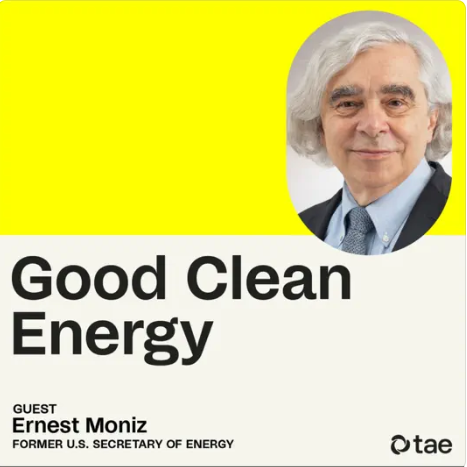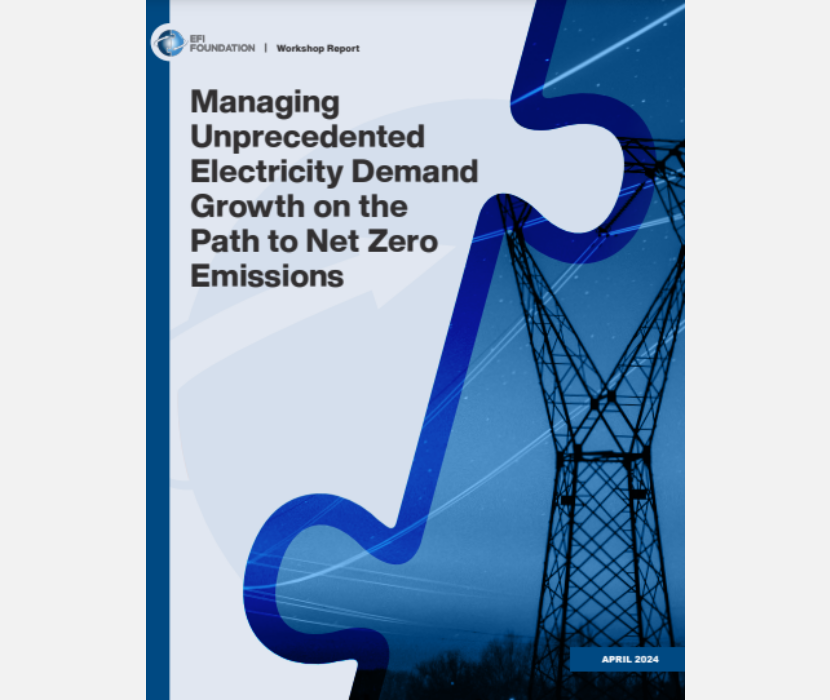
On August 9, 2023, EFI Foundation CEO and former energy secretary Ernest Moniz joined Jim McNeil, chief marketing officer of TAE Technologies, for an episode of TAE’s podcast “Good Clean Energy.” Moniz, who is a member of TAE’s board of directors, used the new movie “Oppenheimer” to highlight the potential of nuclear fusion to tackle the climate crisis.
The movie follows the story of theoretical physicist J. Robert Oppeheimer, who led the Manhattan Project to develop the first atomic bomb during World War II. Much like fascism was an existential threat back then, climate change is an existential threat now. And much like in the 1940s, Moniz said that scientific efforts to enhance our understanding of nuclear physics today could usher in a new era of technological innovation.
He discussed how U.S. nuclear power generation is already producing emissions-free power and mitigating the effects of climate change.
“The nuclear power system in the United States has provided roughly 20% of our electricity for decades,” Moniz said. “Fission has been an enormous boon to carbon-free electricity, but fusion would take that up yet another step.”
Moniz explained that fission produces energy by splitting uranium atoms apart, whereas fusion generates energy by bringing together small nuclei with similar charges that would normally be repelled away from each other. Only under very high temperatures and confinement can these nuclei potentially overcome their repulsion and fuse. Unlike fission-based power generation or nuclear weapons, failed fusion reactions simply dissipate and do not generate waste.
“If we do not succeed in that confinement, then the reaction is just self-terminating,” Moniz said. “That public safety issue isn’t there at all.”
Because of the low safety risks and need for zero-carbon power sources, Moniz underscored that scientists should focus on near-term research and demonstration of fusion technologies to help meet climate goals in the coming decades.
“It’s really critical that we succeed in at least demonstrating that we can do fusion for power in this decade,” Moniz said. “We’ll be able to earn the fruits of that in the succeeding two decades as we go toward net-zero carbon emissions, at least in the industrialized world, by mid-century.”
Moniz also discussed the future of fusion research in the context of the surge of young scientists entering the field. He credited their interest to a desire to avoid the worst effects of climate change.
“Nuclear science, and technology generally, is attracting a whole new generation of young scientists. Fusion, in particular, has this holy grail kind of label—appropriately,” Moniz said. “[Younger researchers are] also looking increasingly to, frankly, address the biggest problems facing societies in the world. Global warming is certainly in the forefront of that.”
Moniz also emphasized that although transitioning to a net-zero economy is a daunting task, it is possible for societies to do. However, they must invest in creating emissions-free energy systems today. Delaying will only worsen the climate crisis.
“As human beings, we have the agency to address this issue by moving toward an economy that does not emit greenhouse gases. It’ll take decades to get there globally,” Moniz said. “But the longer we wait, the more the challenge is. There is no reason not to really start now.”
– Georgia Lyon, Communications Associate
(Share this post with others.)




